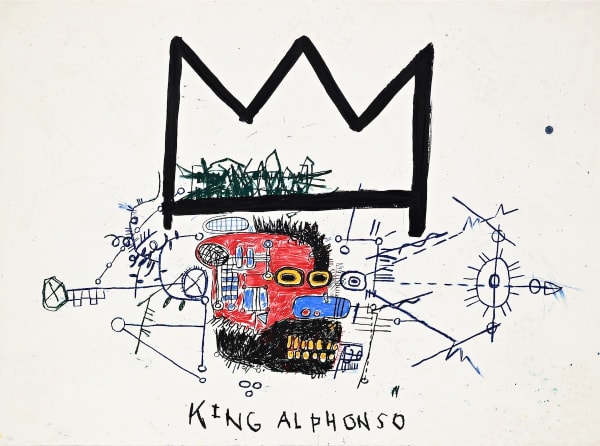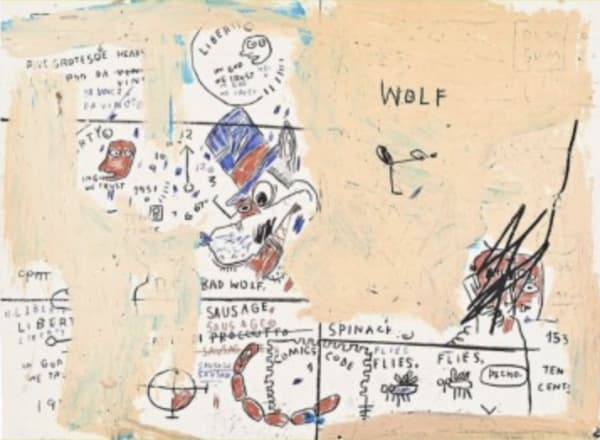Jean-Michel Basquiat compresses the past, present, and future—into a single visual language. By drawing on ancient symbols that he taps into a shared human lexicon that feels prehistoric in its simplicity yet profoundly sophisticated in its meaning. These signs, whether crowns, skulls, bones, or glyph-like marks, function as universal markers of identity, power, struggle, and survival. Basquiat wasn’t quoting the past; he was reactivating it.
His works are unmistakably contemporary. The frenetic layering, fragmented texts, and rapid-fire mark-making mirror the speed, chaos, and information overload of late-20th-century urban life. His paintings operate like visual collages of cultural memory and street experience—sampling jazz, anatomy, history, sports, and Black cultural heroes with the same immediacy as a DJ pulling from multiple tracks at once.
This fusion is ultimately what makes his art prophetic and future coded. Basquiat anticipated the way culture would evolve: hybrid, remix-driven, and deeply self-aware. His art feel like early maps of the interconnected visual world we now inhabit. By merging the archaic with the ultra-modern, he created a vocabulary that still feels ahead of its time—art that exists not in one era, but across all of them at once.















